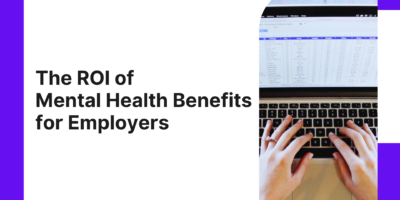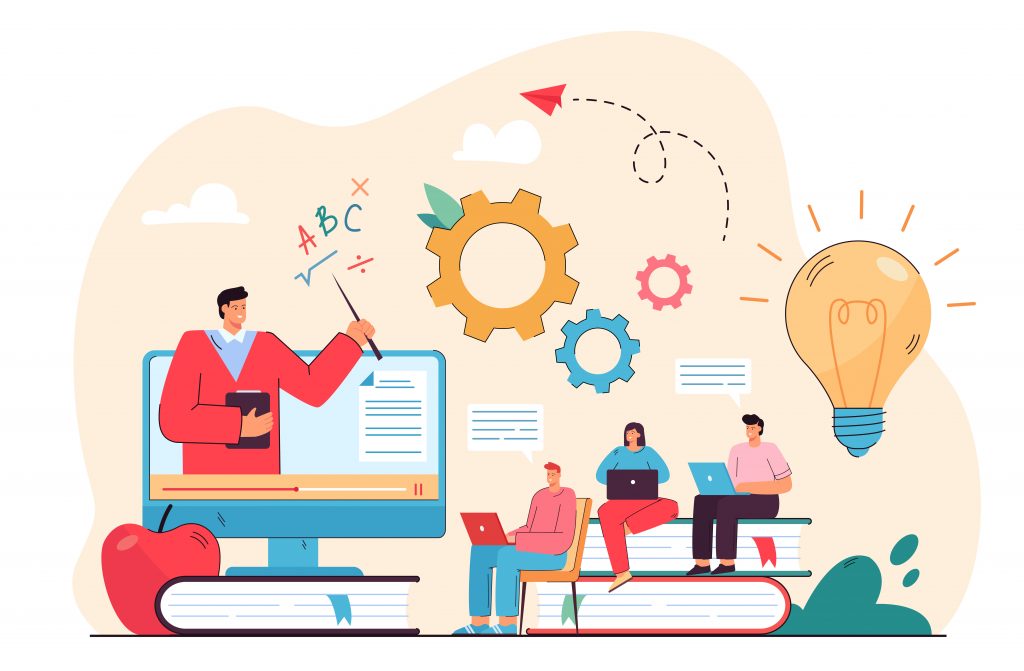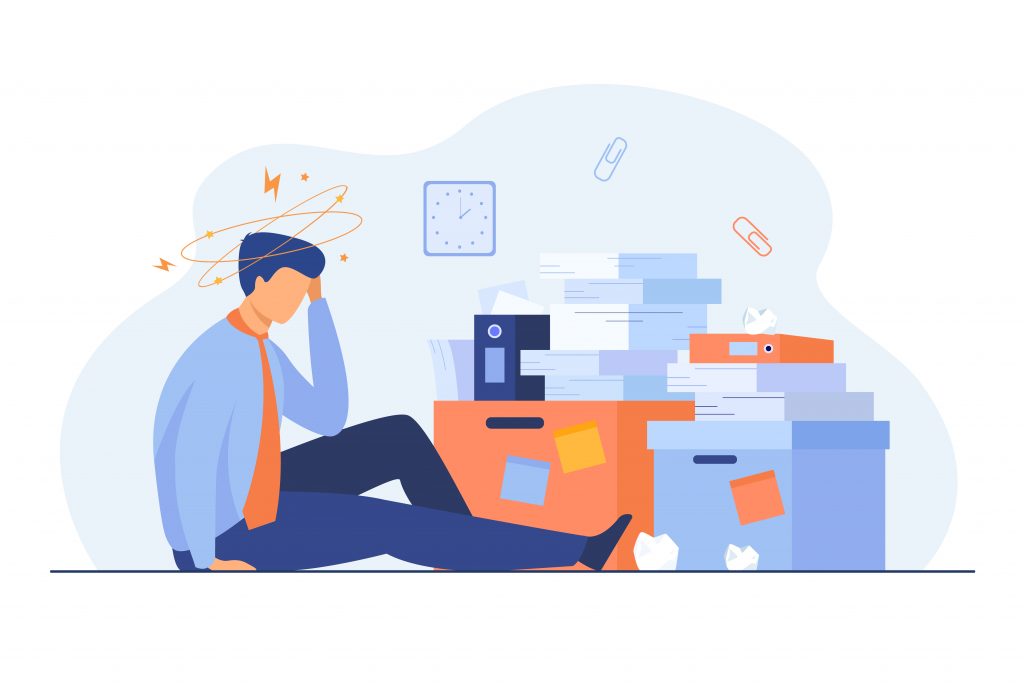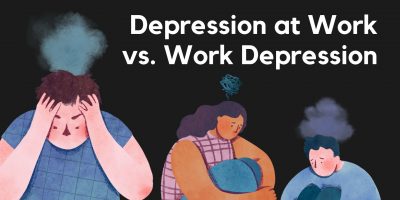
The ROI of Mental Health Benefits for Employers
Investing in mental health benefits is no longer a question of whether or how much it pays off but how long companies can afford to ignore it.


Chief Operations Officer of SmartOffice
ADHD awareness has increased in recent years. This growing trend that has been in the making for years is prevalent among young adults on social media. On TikTok alone, the ADHD tag has more than 17 billion views.
The study published in the Journal of the American Medical Association reveals that there’s also a surge in adult diagnoses, with an increase of 123% in the incidence of adult ADHD in the United States.
Over time, adults have become the primary market for ADHD prescriptions.
According to WebMD, adult ADHD symptoms manifest as difficulty to:
Hence, people with ADHD in the workplace might have trouble excelling or feel like they’re falling behind their colleagues. It can be even more challenging for undiagnosed employees, since their symptoms are often mistaken for laziness, indifference, or incompetence.
However, as perplexing as it sounds, there are positives to having ADHD, including out-of-the-box thinking, enhanced creativity, and extreme focus.
To say that ADHD in the workplace is intricate would be an understatement. It’s a case that requires the utmost attention and understanding, especially in such a diverse environment.
With that in mind, this Shortlister article explores an aspect of behavioral health and employee well-being. By closely analyzing the data, we examine what ADHD means for all involved parties and what are the best tools and strategies for ADHD in the workplace.

ADHD, short for attention-deficit/hyperactivity disorder, is a neurodevelopmental condition usually associated with younger children.
In fact, it affects millions of kids ages three to 17 in the U.S. alone, with the Centers for Disease Control and Prevention estimating this number to be at six million. As per a systematic review and meta-analysis published in the National Library of Medicine, ADHD prevalence in children worldwide is around 7.2%.
Although insightful, these studies fail to mention how the condition transcends into adulthood or what it means for a person’s day-to-day life, including how they complete tasks, handle social interactions, and how it affects them in the workplace.
To make matters worse, most adults with attention deficit hyperactivity aren’t diagnosed or don’t receive proper treatment, as symptoms are often mistaken for something else.
Attention-deficit/hyperactivity disorder in mature patients often coincides with one or more mental, emotional, or behavioral disorders.
For example, people who suffer from anxiety or depression can write their symptoms off as a side effect of their condition. There’s also an overlap between this condition and autism. People on the autistic spectrum are more likely to have ADHD and vice versa.
One study from the National Library of Medicine reveals that 30-80% of children with autism have attention deficit hyperactivity, while 20-50% of children with ADHD meet the criteria for autism.
In adults, the strain of day-to-day life could exacerbate some symptoms. Feeling stressed, anxious, or distracted has become standard, while COVID-19 caused the “pandemic brain,” making ADHD even more challenging to diagnose correctly.
But what does that have to do with ADHD in the workplace?
As a construct, the workplace abides by societal standards. Naturally, when society enforces one way of thinking or acting, people will have a hard time accepting a diverse way of thinking, or “neurodiversity”, and this translates into the workplace as well.
For employers to be able to comprehend ADHD symptoms and how they can be problematic in this environment, it’s vital to recognize and distinguish them from other underlying conditions and factors.
The three defining features of the condition in all age groups are:
Rejection sensitivity, or Rejection Sensitive Dysphoria (RSD), is a significant concern for those with ADHD, affecting all aspects of their lives. It means being vulnerable to rejection and criticism.
However, in this aspect, what separates employees with ADHD from others is that the reactions are often the result of their perception of things instead of actuality. Dealing with this is also where they differ from those with ADHD because RSD tends to cause extreme emotional pain for them, sometimes even manifesting as physical pain.
At work, this would mean a lack of control over feedback, especially when it’s negative, emotional outbursts, or harboring negative feelings, often without ever expressing them.
These employees are the people pleasers and the “yes men” in the office, which can eventually trigger severe anxiety or burnout.

Emotional hyperarousal is just another word for hyperactivity.
Although it’s the most recognized symptom in children, it’s less likely to manifest in adults. In addition, emotional hyperarousal is less prevalent than RSD.
However, employees with ADHD can feel relentless due to their condition, and their reactions can become much more intense. They experience the highest of highs and the lowest of lows.
If these symptoms begin to show at an earlier age, they can influence the person into becoming an adult with lower self-esteem and a tendency to overthink and self-blame.
Like RSD, this, too, can cause poor feedback responses in the workplace. Hyperactive employees with ADHD can also seem more distracted or disorganized in the workplace.
The ultimate conundrum of ADHD symptoms is the constant battle between hyper-focusing and procrastination.
Those with ADHD have an “interest-based nervous system.” Therefore, when they’re dealing with either one of these symptoms, it’s not because they have a deficit or surplus of attention. Instead, they are dealing with inconsistent attention that is incentive-based.
Hence, attention-deficit/hyperactivity disorder employees perform better when they have a job that interests them and will often finish tasks based on their priorities or the incentive they provide.
When hyper-focused, they could efficiently finish tasks, sometimes spending hours on end without losing focus.
Then there’s procrastination, which results in the complete opposite.
ADHD procrastination can often be described as the physical inability to accomplish something rather than not wanting to do it. It’s also why companies often perceive employees with an interest-based nervous system as lazy and uninterested or as overachievers.
The entrepreneur’s superpower.
That’s how Dr. Dale Archer, a medical doctor and board-licensed psychiatrist, refers to ADHD in an article for Forbes.
Dr. Archer believes that, with the right career choice and when leveraged correctly, the positive characteristics of attention-deficit/hyperactivity disorder are an employee’s strength.
He references successful entrepreneurs like Ikea founder Ingvar Kamprad, JetBlue founder David Neeleman, and business mogul Richard Branson, who all have ADHD and claim to have used it as a stepping stone for their achievements.
As these individuals practically built empires and excelled in their careers, some still struggle at work with even the most basic tasks.
So, what seems to be causing the discrepancy between ADHD symptoms manifestation and how they affect the workplace?
Ideally, those with ADHD could excel in the workplace when they find something enjoyable or fall behind when something causes stress or becomes a routine.
In reality, the ADHD symptoms and their manifestations are much more complicated and individualistic. They can create employment challenges if not treated correctly.
In fact, without a diagnosis or the proper treatment, employees could experience significant repercussions in the workplace. According to the article from Springer Link, employees with this disorder are 200% more likely to perform poorly and quit and 66% more likely to get fired than their colleagues.
Moreover, this neurodevelopmental disorder translates into all aspects of employment, including the job search, the recruitment process, and the salary. In fact, employees with ADHD have a lower income than individuals without.
Yet, entrepreneurs like Branson or Neeleman found themselves excelling at work. That’s because, as perplexing as it sounds, this condition has its benefits.
An article from the National Library of Medicine reveals that these neurodivergent individuals also tend to be more creative, innovative, inventive, and overall curious. Other common characteristics are multi-tasking, hyperfocus, risk-taking, and high energy.
Sometimes the conventional way of doing things might not be the best solution. Thus, their out-of-the-box approach to an issue could give them an advantage in the workplace by encouraging fresh ideas and innovative ways to solve a problem or a task.
However, this doesn’t null the negative symptoms and manifestations.
The key is understanding the symptoms and how they affect the individual and identifying ways to turn them into positives.
In a work environment, this should be a matter that concerns all parties, including the leadership and HR.
Only a positive and inclusive work culture can give an employee with ADHD a fair chance of excelling at the same pace as everyone else.

Like other mental disorders, people fear what they don’t completely understand.
Considering how little we know about ADHD or how adults exhibit symptoms, perhaps it’s no surprise that those living with the condition risk being discriminated against by their employers or colleagues at work.
Two U.S. federal laws prevent discrimination against people with disabilities in the workplace: the Rehabilitation Act of 1973 (RA) and the Americans with Disabilities Act of 1990 (ADA).
But how does ADHD fall into this category?
Under both laws, this neurological condition is, in fact, a disability. Yet, those with ADHD are not automatically eligible for protection in the workplace unless they meet all four requirements under RA or ADA:
In other words, such employees must be formally diagnosed with attention deficit/hyperactivity disorder and disclose their condition to the employer, but many won’t ever do so.
The stigma around mental health is indisputable.
People often compare others and themselves against a set of socially constructed norms that can’t possibly accommodate all behaviors, which vilifies anyone who somehow challenges the status quo.
The fear of being alienated is reason enough for people who suspect they may have ADHD not to get a diagnosis or treatment or for diagnosed adults not to share their condition with others, including their employers.
Other times, hyper-focused adults performing well at their job might opt to keep ADHD in secrecy to avoid their efforts being discredited by others.
In both cases, ADHD discrimination in the workplace is present. Left unattended, it can progress to bullying.
As a mental disorder typically associated with children, most people might have an issue wrapping their heads around the idea of adults with ADHD.
Our understanding of the disorder and its effect on grownups is still relatively minuscule. Hence, a workplace built on specific behavioral patterns can be hostile towards neurodivergent people.
The problem with ADHD and workplace bullying is that it creates a vicious cycle that discourages progress.
Not comprehending the condition leads to conflict and bullying, preventing people from openly discussing it and thus educating others.
Not to mention the toll it can have on the worker’s mental health and well-being.
Facing derogatory comments, humiliation, or being shamed for their mental condition violates employee and human rights.
What makes the matter even more problematic is that bullying can take a much more subtle form, like giving those with ADHD lower paychecks or denying them promotions.
Since low self-esteem can be an ADHD manifestation, these individuals are more prone to intimidation and pressure from their environment.
Hence, they can let issues like this slide, fall behind with tasks, lose motivation, or get discouraged from talking about their condition and ask for help from HR professionals or their management. That only amplifies the vicious cycle of ADHD and workplace bullying that companies must stop.
Employees with an underlying mental disorder can choose whether they disclose their diagnosis and to whom.
Some prefer to keep it private, learning to mask and contain their symptoms from influencing their productivity. Without revealing their condition, they can ask for adjustments to their work environment or if the company offers access to a confidential EAP provider.
But for someone to receive complete ADHD accommodations in the workplace, they must communicate their diagnosis with their employer, a manager, or an HR professional. That is often necessary to manage burnout, evade excessive stress, and balance ADHD symptoms that affect the worker’s performance and work quality.
To gain access to programs, tools, or resources that can help alleviate the symptoms of ADHD, employees should ideally talk with an HR representative or a manager. They may need a doctor’s written confirmation as proof of having the condition. The worker can turn to an attorney if the employer refuses to provide accommodation.
Based on the individual symptoms, the company should provide the most suitable and realistic accommodations to keep employees happy and engaged in the workplace. However, this requires a meticulous approach.
Ultimately, accommodating those with ADHD should fix a problem without creating one. Giving “special” attention to some workers can potentially backfire, circling back to the issue of ADHD discrimination in the workplace.
Therefore, companies must find suitable strategies and tools that work best for them and their employees.

Accommodating those with ADHD can be simple and inexpensive.
However, the manager must find the struggle points for implementing the right tools and strategies for ADHD in the workplace.
Workers with attention deficit hyperactivity should be comfortable enough to talk about their condition and ask what they need. An employer must create a safe environment where open communication and inclusion are drivers of progress.
It’s also the best way to customize the accommodation strategies to fit the employee’s needs. Only then can the company provide the necessary tools and resources and maximize its effectiveness.
Everyone must be on board for a company culture to be inclusive toward workers with ADHD. Therefore, managers and HR must provide resources and training to increase the apprehension of this condition in the office.
Gaining colleague support will mitigate the risks of discrimination and bullying and could strengthen team cohesion. To improve the overall social well-being in the workplace, it’s essential to build a strong relationship between neurodivergent and neurotypical workers.
Those with ADHD experience many symptoms, some resulting in weaknesses in the workplace, while some can pose a huge advantage.
Employees can be creative, innovative, and super-focused while simultaneously experiencing difficulties managing their time or finishing a specific task.
By exploring and boosting the strengths while mitigating the weaknesses, employees can become much more productive and add immense value to the team.
With this in mind, the value of making customized workplace adjustments is clear.
Everyone with ADHD differs, so workplace adjustments should be carefully customized. It can be something simple, such as providing noise-canceling headphones or quiet working space to improve distractibility.
Paul Towler, Chief Operations Officer of SmartOffice, recommends “space bubbles” as a way to deal with distractions and increase productivity.

Although you might not have complete control over your workplace, you can still make the most of it by
For those exhibiting signs of hyperactivity or impulsive behavior, this approach might not help. Instead, they need regular breaks, physical activity, or tools that can help them stay focused.
Other easy ways to accommodate those with ADHD based on their symptoms are:

There’s still little knowledge surrounding attention-deficit/hyperactivity disorder. One study suggests that, unlike most conditions, this one is likely a spectrum of impairments. So, it’s not something one entirely does or doesn’t have.
Considering how a fifth of all people are neurodiverse, it’s more common for companies to have neurodivergent employees, including those with ADHD, than one would think.
Therefore, from an employer’s standpoint, accommodating these workers and creating a safe environment where they can excel begins with education on the topic and providing practical resources for everyone in the office.
Raising awareness of mental health, particularly ADHD, is always a step in a positive direction. It improves the overall employee experience and sets the foundations of a positive and accepting work culture where people with ADHD can feel comfortable and as equals.
Browse our curated list of vendors to find the best solution for your needs.
Subscribe to our newsletter for the latest trends, expert tips, and workplace insights!

Investing in mental health benefits is no longer a question of whether or how much it pays off but how long companies can afford to ignore it.

The significance of men’s mental well-being extends far beyond the confines of Men’s Mental Health Month initiatives. Yet, why is there still a stigma around it?

Loneliness can be a serious problem affecting not only employees’ mental health but also the bottom line for businesses. What are the tell-tale signs of workplace loneliness, and what can employers and organizations do to reduce or mitigate it?

Is there still a long way to go in fostering a culture of empathy where depression at work and work depression are viewed and treated with the same respect and urgency as any other health issue?
Used by most of the top employee benefits consultants in the US, Shortlister is where you can find, research and select HR and benefits vendors for your clients.
Shortlister helps you reach your ideal prospects. Claim your free account to control your message and receive employer, consultant and health plan leads.